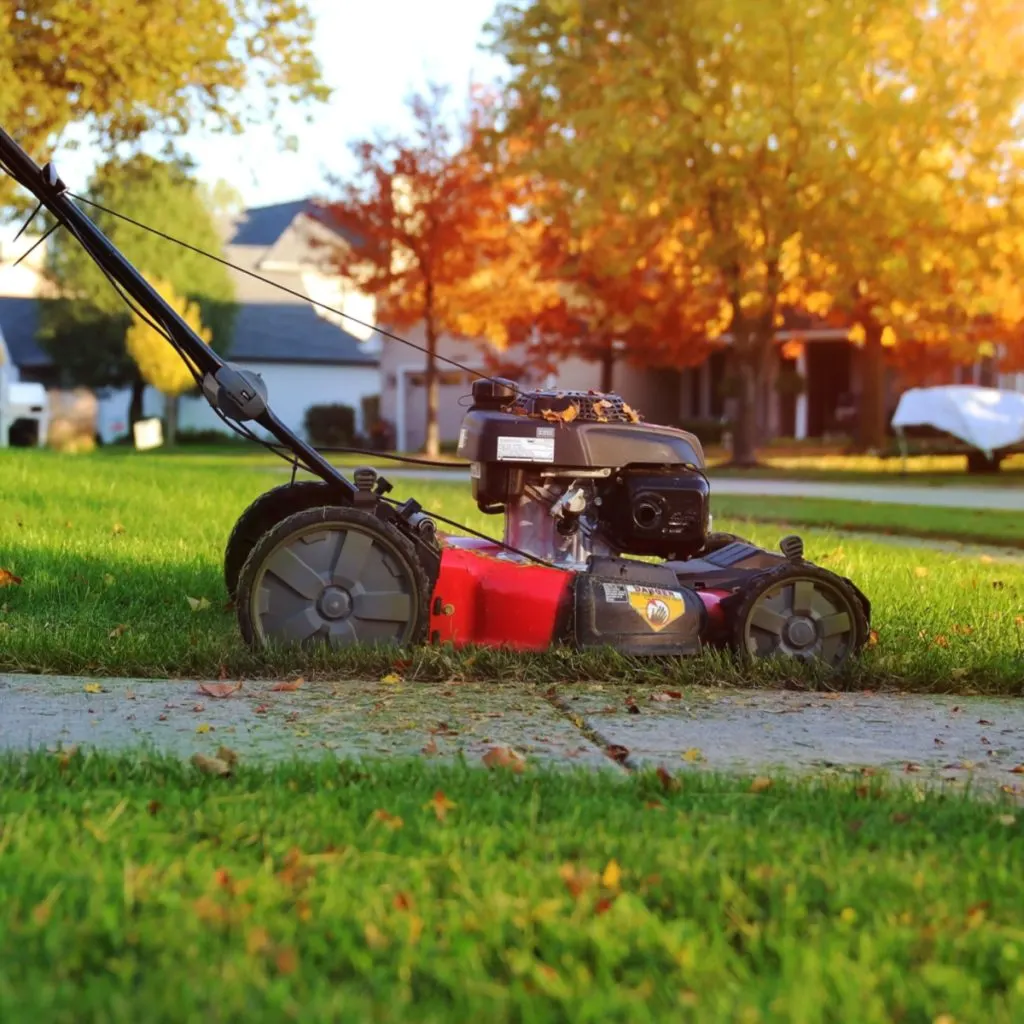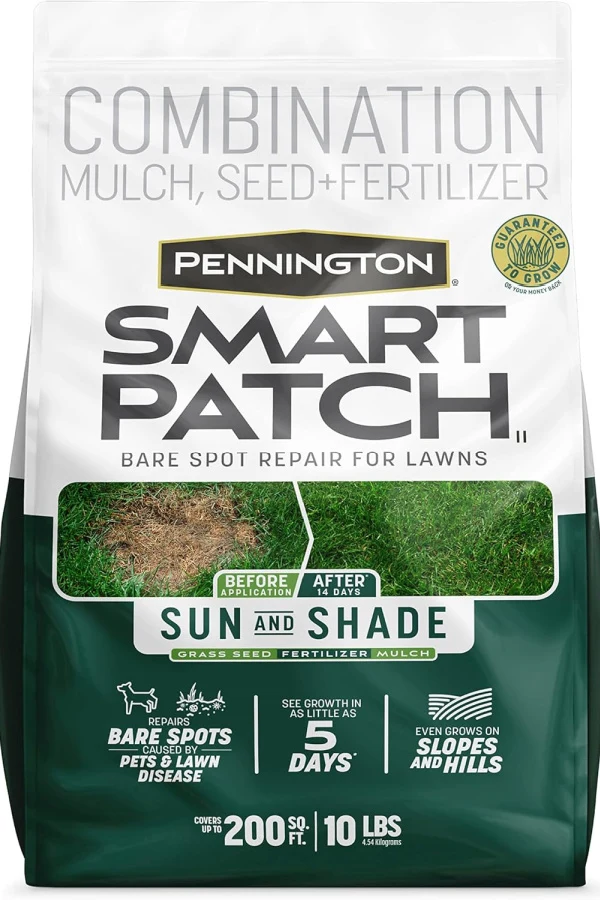If you want to make next year the year you finally have that gorgeous lawn you’ve always dreamed of – then this fall is the time to take care of three essential lawn chores to set the stage for big success!
Even though many gardeners spend all kinds of time on their lawn in early spring and summer, as it turns out, fall is actually the best time of all to refresh your lawn. Why? Because the cooler temperatures and wetter conditions are incredibly helpful when it comes to repairing and strengthening grass.
Summer can be tough on your yard. Extreme heat, dry weather and intense sunlight all cause serious stress. Not only can all of those harsh conditions make it difficult for lawns to stay fresh and green – it’s also the season where a lot of activity can take place on it as well.

Let’s face it, by the end of summer, lawns often show all kinds of wear with brown spots, thinning grass and bare patches due to heavy use from regular mowing, sports activities and general use.
Unfortunately, if you let all of those issues remain over the winter months, they will only make matters worse next spring – which is exactly why taking action this fall is the way to go. The good news? With just three simple steps this fall – you can reset your lawn with ease for spring success!
3 Essential Fall Lawn Chores That Will Help Next Year’s Lawn Now!
1. Patch Up Bare Spots
If there is one thing that you can do to not only make your lawn look better but also prevent weeds next year – it’s to fix the bare patches and spots all over your lawn!
After a lot of summer wear and tear, bare spots are quite common. But letting them remain is asking for trouble. Open soil is a haven for weed seeds to find a permanent home. Especially crabgrass, which seeds heavily from existing plants in late fall to become an even bigger issue next year.
But by repairing and covering existing bare spots, you keep weeds to a minimum. And the cooler temperatures and dewy mornings make it easy for grass seed to grow and fill in quickly.

How To Patch Bare Spots – 3 Essential Fall Lawn Chores
Start by clearing away any dead grass from the spot. Next, loosen up the soil in the bare patches to allow for seeding. Then, before seeding, add in a bit of compost to power up the soil for the new seed.
It’s so important to always use a high quality seed mix to ensure good germination and growth. Poor seed will lead to patchy, weak growth. Once you have your seed, Spread it thickly over the patch and gently rake it into the soil. Affiliate Seed Link: Pennington Smart Patch Sun and Shade Mix 10 lb
Last but not least, water the area gently to set the seed. Finish by covering the seeded patches with straw. This will help to retain moisture and keep birds and other animals from eating the seeds.
Water the patches every few days until the seeds sprout. Once the grass is up, water twice a week until the new grass is fully grown. Be careful not to overwater as too much water can prevent the roots from growing deep and strong.
Always be sure to wait 4 to 6 weeks before mowing any new seeded areas to give the grass time to establish. In most cases, new seeding areas can be left unmowed in late fall until the following spring.

2. Mow the Grass Shorter – 3 Essential Fall Lawn Chores
Yes, how you mow your lawn in late fall really does make a difference in how next year’s turf will perform. So how you should you mow it late in the season? As it turns out, one of the most important things you can do in the fall is to mow your grass shorter than usual.
While it’s better to keep the grass taller in late spring and summer to hold moisture, cutting it lower in the fall helps prevent a long list of issues.
As the weather cools and gets wetter, longer grass takes longer to dry out. That can lead to problems with mold and other lawn disease. In addition, fallen leaves stick tightly to tall grass, making it hard to rake and mow.
During the summer, lawns should be kept anywhere from 3.5 to 4 inches high. In the fall, reduce the height to 2.75 to 3 inches. This height keeps a lawn safe from weeds but allows it to dry out more easily.
This also helps prepare the lawn for winter, as shorter grass won’t get weighed down and damaged by snow.

3) Aerate and Overseed Your Lawn – 3 Essential Fall Lawn Chores
Last but not least – aerate and overseed your lawn before winter arrives! Aerating and overseeding are both simple but high;y effective ways to strengthen your lawn.
Aerating helps the soil breathe by poking holes into it – allowing water, air, and nutrients to reach the grass roots. Overseeding after first aerating then allows seed to fill in to open channels and thicken up your lawn.
There is no need to purchase an expensive aerator. Most tool rental shops have them ready to rent – and it usually only takes a few hours to perform. After aerating, it’s a great time to overseed, which is the process of spreading new grass seed over the existing lawn to fill in thin areas.
While you don’t have to aerate before overseeding, aerating creates holes that make it easier for the seeds to take root.
For best results, overseed 35 to 45 days before your first expected frost. This allows new seeds to have time to grow before the cold sets in. To overseed, mow your lawn to about 2.5 inches, then use a seed spreader to evenly scatter grass seed over the lawn.
Here is to taking the time to perform three easy but essential chores on your lawn this fall. And even more – to having a great looking yard next spring, summer and fall! For more fall lawn and garden info, be sure to check out our article How To Prepare Potted Strawberry Plants For Winter.
Simple Garden Life
Follow Our Facebook Page For Even More Great Tips! Simple Garden Life Facebook Page
Simple Garden Life is a website dedicated to keeping gardening fun, simple and enjoyable! We publish two new articles each week along with a new garden podcast episode every two weeks. This article may contain affiliate links.
